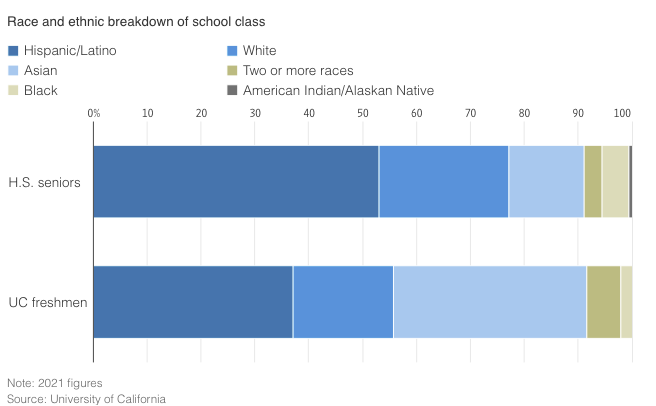from The Gray Area:
6/29/23:
Ideological differences are transparently on display as seen in reactions to the Supreme Court decision today regarding affirmative action in colleges.
The Supreme Court found it unconstitutional to consider race in university admissions, eliminating the principal tool the nation’s most selective schools have used to diversify their campuses.Thursday’s 6-3 decision will force a reworking of admissions criteria throughout American higher education, where for decades the pursuit of diversity has been an article of faith. No longer able to give such applicants an automatic boost, admissions offices now must decide where racial diversity ranks among priorities that can include academic performance, achievement in extracurricular activities such as athletics, and preferences for alumni and donors.
On one side, its all about equal opportunity and what you do with it.
- Senator Tim Scott: "This is a great day for America, because we understand that being judged by the content of our character, not the color of our skin is what out Constitution wants."
- Justice Clarence Thomas:"While I am painfully aware of the social and economic ravages which have befallen my race and all who suffer discrimination, I hold out enduring hope that this country will live up to its principles so clearly enunciated in the Declaration of Independence and the Constitution of the United States: that all men are created equal, are equal citizens, and must be treated equally before the law ... affirmative action is also discrimination ... rudderless, race-based preferences designed to ensure a particular racial mix ... Those policies fly in the face of our colorblind Constitution and our Nation's equality ideal. In short, they are plainly — and boldly — unconstitutional."
- Chief Justice John Roberts: “The student must be treated based on his or her experiences as an individual — not on the basis of race,” Roberts wrote. “Many universities have for too long done just the opposite. And in doing so, they have concluded, wrongly, that the touchstone of an individual’s identity is not challenges bested, skills built, or lessons learned but the color of their skin. Our constitutional history does not tolerate that choice.”
On the other side, its all about identity, what you are owed and what you should be given.
Abortion and other major issues fall along this ideological line. We must make decisions and policy based on reality and the Constitution, not based on political narratives and artificial standards of fairness.
Representation by race on the Supreme Court is as follows:
- Black: 13% of the population. 2 Justices are black (1 Dem, 1 Rep), representing 22%
- Hispanic: 18.7% of the population. 1 Justices is Hispanic (Dem), representing 11%
- Asian: 6.8% of the population. 0 Justices are Asian, representing 0%
- Women: 50.5% of the population. 4 Justices are women (3 Dem, 1 Rep), representing 44.4%
- Men: 49.5% of the population. 5 Justices are men (0 Dem, 5 Rep), representing 55.5%
Affirmative Action is about race, meaning black. As you can see, the Supreme Court itself is doing rather well in that category. If Democrats could select the next Supreme Court Justice by race, which they did the last time, they would eliminate a man and replace him with a second Hispanic Justice. This would make the court more racially balanced. But, is race, or political ideology, the criteria we want to use for selecting Supreme Court justices? Of course, not. You want Constitutional lawyers. And, if a person of any race can compete on that list, then it may be the factor that weighs more positively in his /her selection. It already has. And it should also work that way in college admissions, in corporations, in government, everywhere.
But, are there other factors inhibiting racial diversity?
Nine states, including California, Oklahoma, Michigan, Texas, Florida and New Hampshire, have already banned race-conscious admissions, mainly as a result of voter initiatives. They have pursued a range of new approaches and doubled down on others to boost the numbers of Black, Hispanic and Native American students on campus, including expanding recruiting in minority neighborhoods and considering proxies for race, such as socioeconomic status—and yet consistently fell short of their goals. Is maybe preparation for college, not racial diversity, the problem that needs fixing?
 More From The Wall Street Journal (subscription required):
More From The Wall Street Journal (subscription required):
More From The Wall Street Journal (subscription required):




